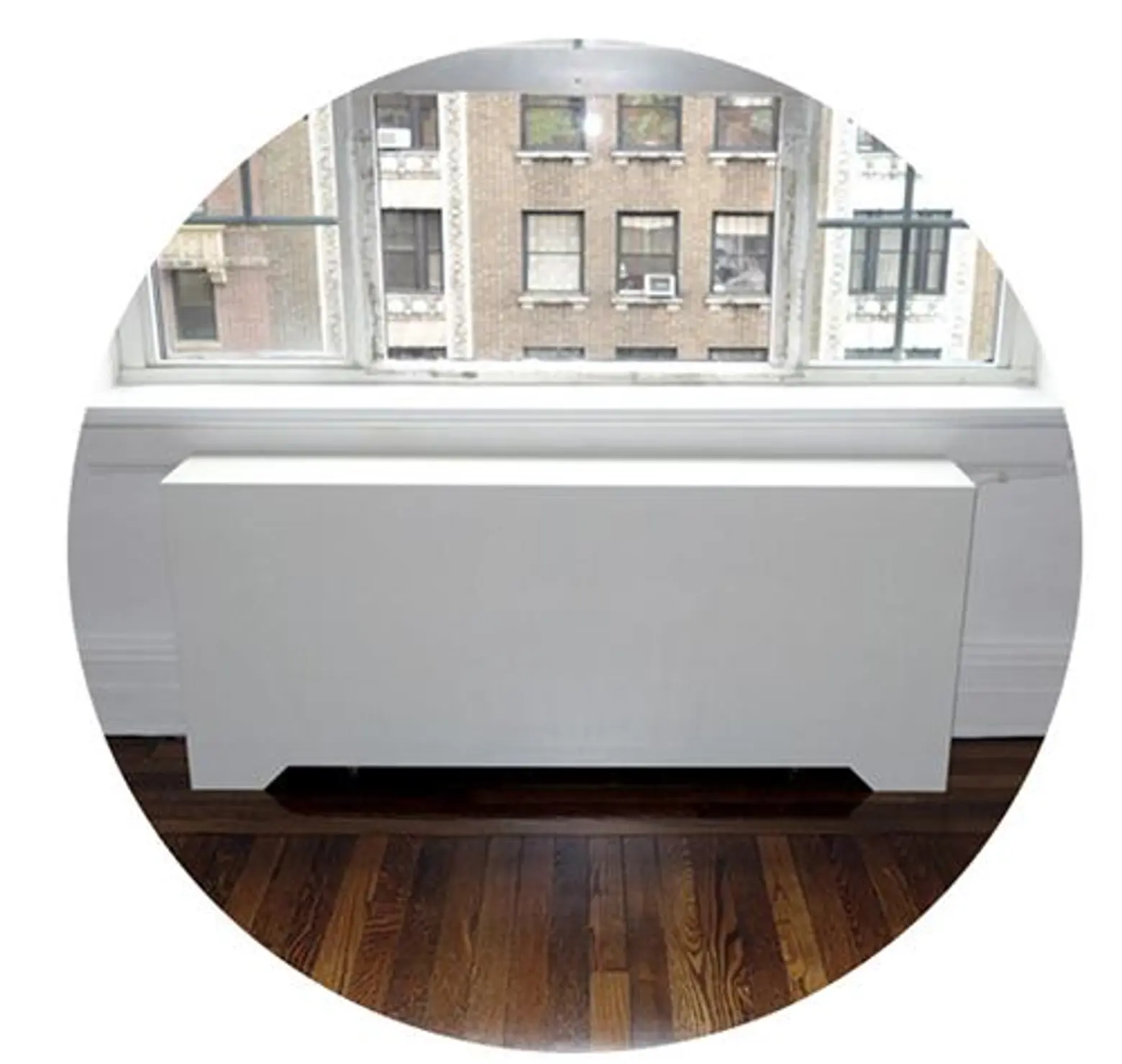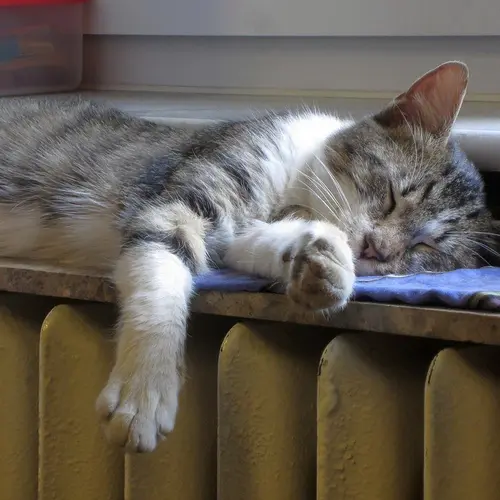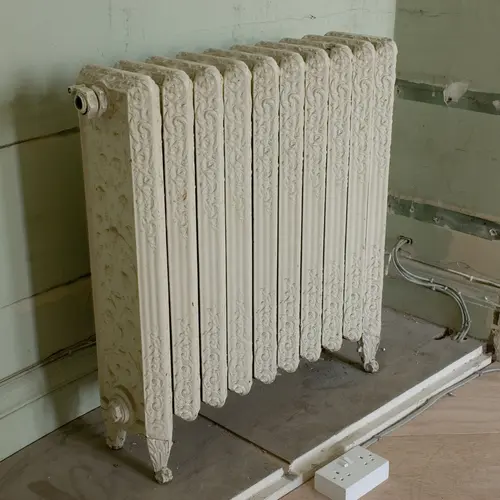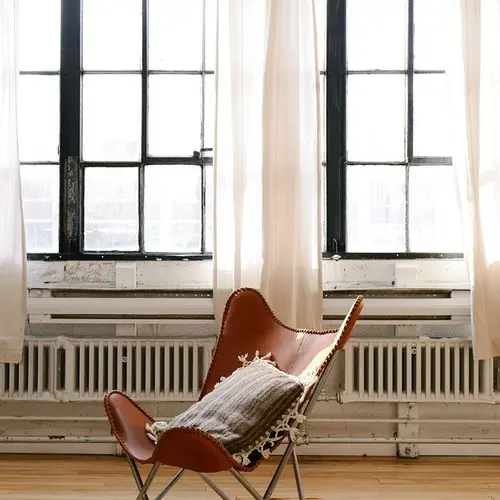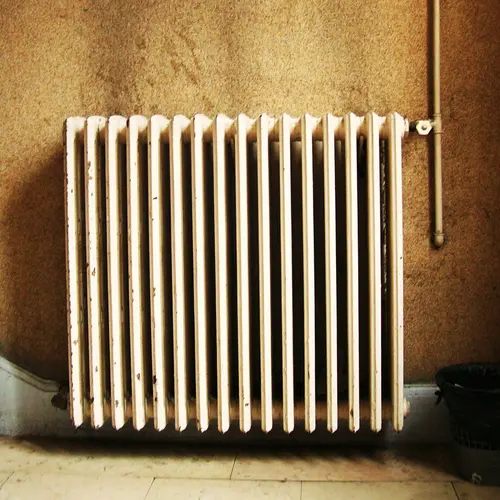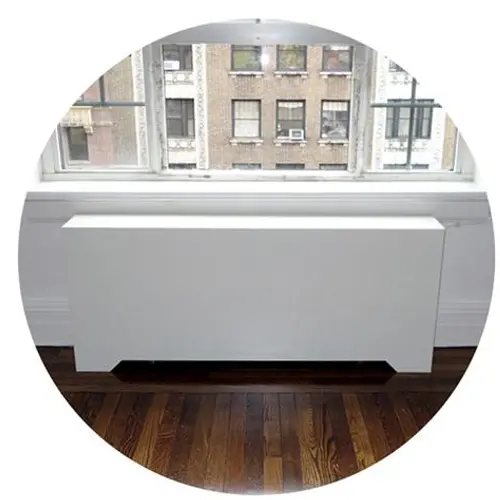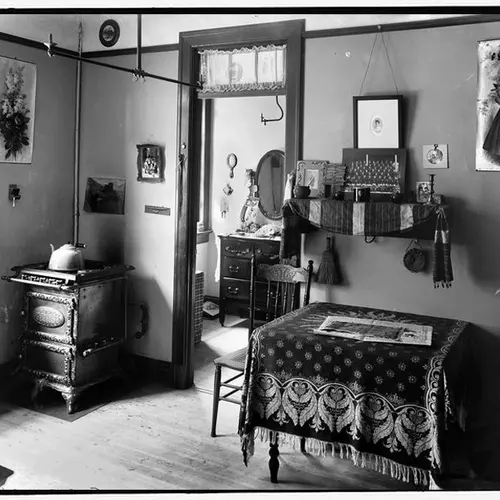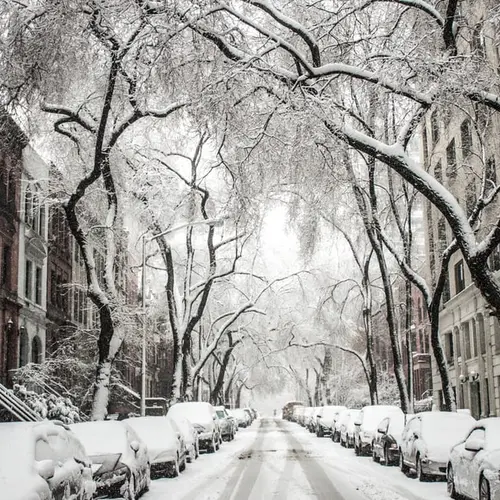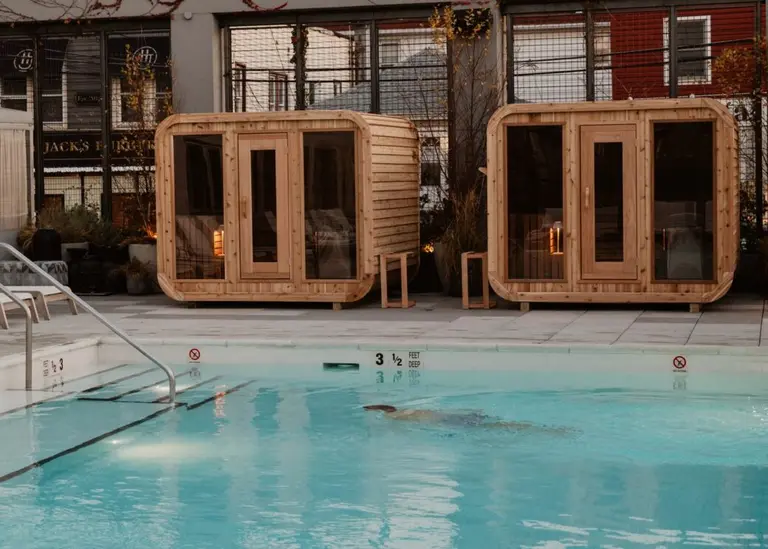Sauna-hot apartments: How to cope without stripping down

Photo via pxhere
From a distance, one may wonder why television characters living in New York City apartments so often appear to wear little at all in the privacy of their own homes. From Archie Bunker’s white undershirts on “All in the Family” to Carrie Bradshaw’s lingerie on “Sex in the City” to Hannah Horvath’s practical skivvies on “Girls,” fictional New Yorkers always seem to be stripping down to the bare essentials regardless of the season. To any real New Yorker, there is an obvious reason why these fictional New Yorkers are so often shown partially clad July or January: New York apartments have a tendency to be sauna hot. But in a city where tenants frequently have to fight for even the most basic amenities, how did heat become overly abundant, even in the dead of winter?
The Chilly History of Heating New York City Apartments
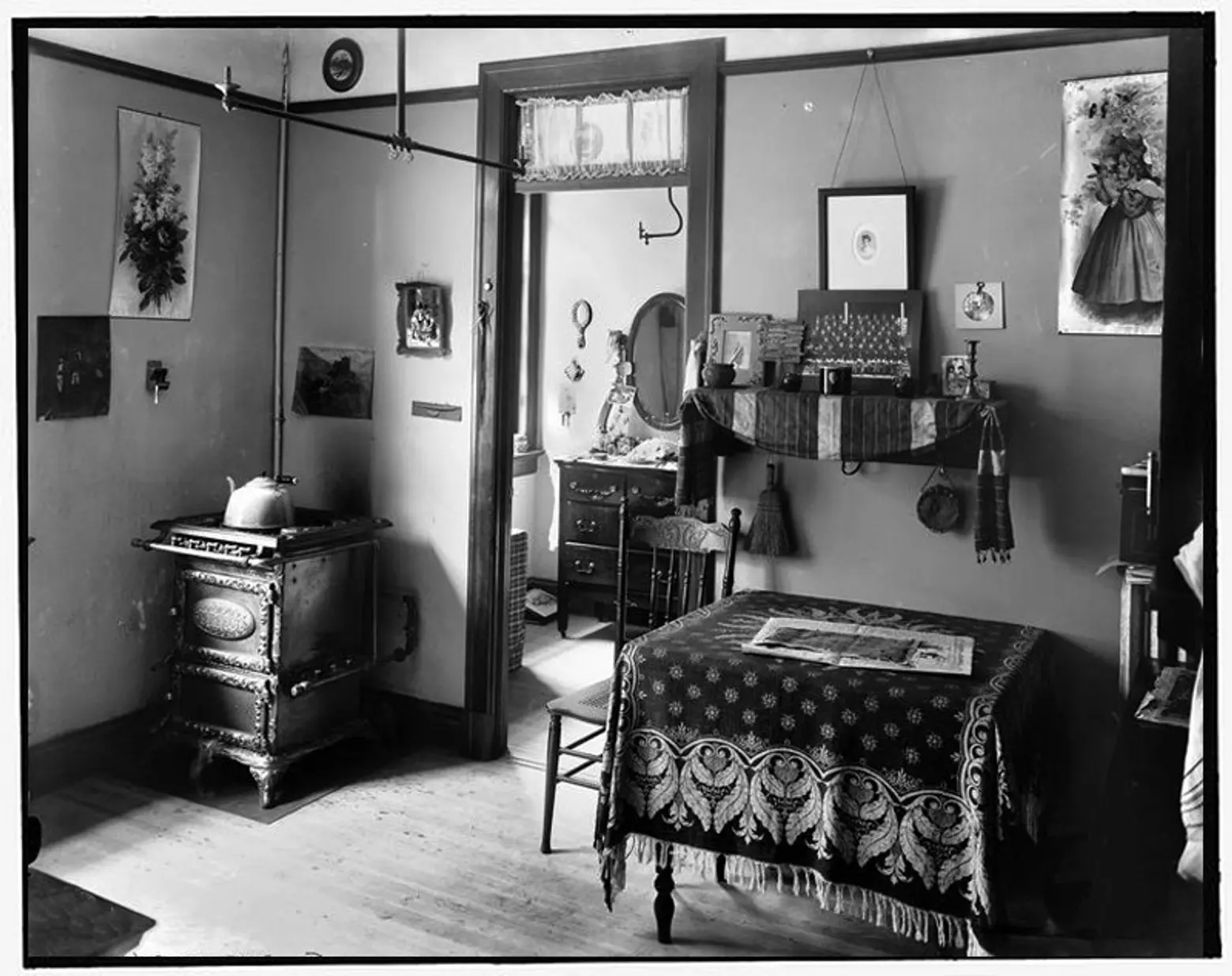 1910 NYC tenement kitchen with a coal stove, via Detroit Publishing Co./Library of Congress
1910 NYC tenement kitchen with a coal stove, via Detroit Publishing Co./Library of Congress
As coal kitchen stoves, which once provided heat to tenants, were replaced with central heating systems in the late nineteenth to early twentieth centuries, complaints about cold apartments spiked. In response, a citywide ordinance was introduced in the early 1920s to ensure that all apartments would meet a minimum heat standard of 68 degrees. But not all landlords complied.
In 1922, the first of many heat-related violations was brought forward in a Brooklyn court. In the end, a tenant successfully argued that his landlord was responsible for the death of his four-month old son. In this case, the building’s coal furnace had been out of commission and no coal was on site throughout January. The judge slapped a hefty—for 1922—$2500 fine on the landlord.
But tenement landlords were not the only ones who failed to comply. In 1957, the owner of 995 Park Avenue, a luxury high rise in the Upper East Side, was sentenced to five days in jail for keeping the building’s heat at a chilly 50 degrees Fahrenheit in the middle of January. Today, complaints about winter apartment temperatures continue to arise, but in most cases, overheating rather than under heating is the problem.
Tenant Rights and Landlords’ Obligations
According to the City of New York, in buildings with six or more units, landlords must provide heat and hot water to all tenants. While it is true that some leases require that tenants pay for gas, fuel, or electricity to run heating equipment, by law, owners are responsible for ensuring that the heat is available. Specifically, they are required to provide hot water year round at a constant minimum temperature of 120 degrees and from October 1st and May 31st, which is commonly known as “Heat Season,” they are also required to provide heat.
There are two regulations for heating buildings. From 6:00 AM to 10:00 PM, if the temperature has dipped below 55 degrees Fahrenheit, the indoor temperature must be at least 68 degrees. Between 10:00 PM and 6:00 AM, if the temperature drops below 40 degrees, the indoor temperature must be at least 55 degrees Fahrenheit. While these day and night temperatures are considered average and match recommended indoor temperatures in colder climates, including Canada and Iceland, in many New York apartments temperatures hover well above these recommended averages.
As musician Chris Stauffer explains, “We live in Washington Heights, and seriously, my apartment is usually well over 80 degrees. A lot of my neighbors and my superintendent come from warmer places in the world, so this may be comfortable for them, but I’m from Minnesota and really don’t mind a bit of winter.” To cope, Stover admits that he regularly resorts to stripping down and to leaving his windows propped open.
“My mom sends me these awesome hand-knitted socks and sweaters,” says Stover, “But they just sit in my closet.”
While many New Yorkers share Stover’s assumption that overheated apartments are the result of cultural differences, this is simply a myth. The real reason why the city’s buildings are often overheated has more to do with engineering and building design than cultural norms.
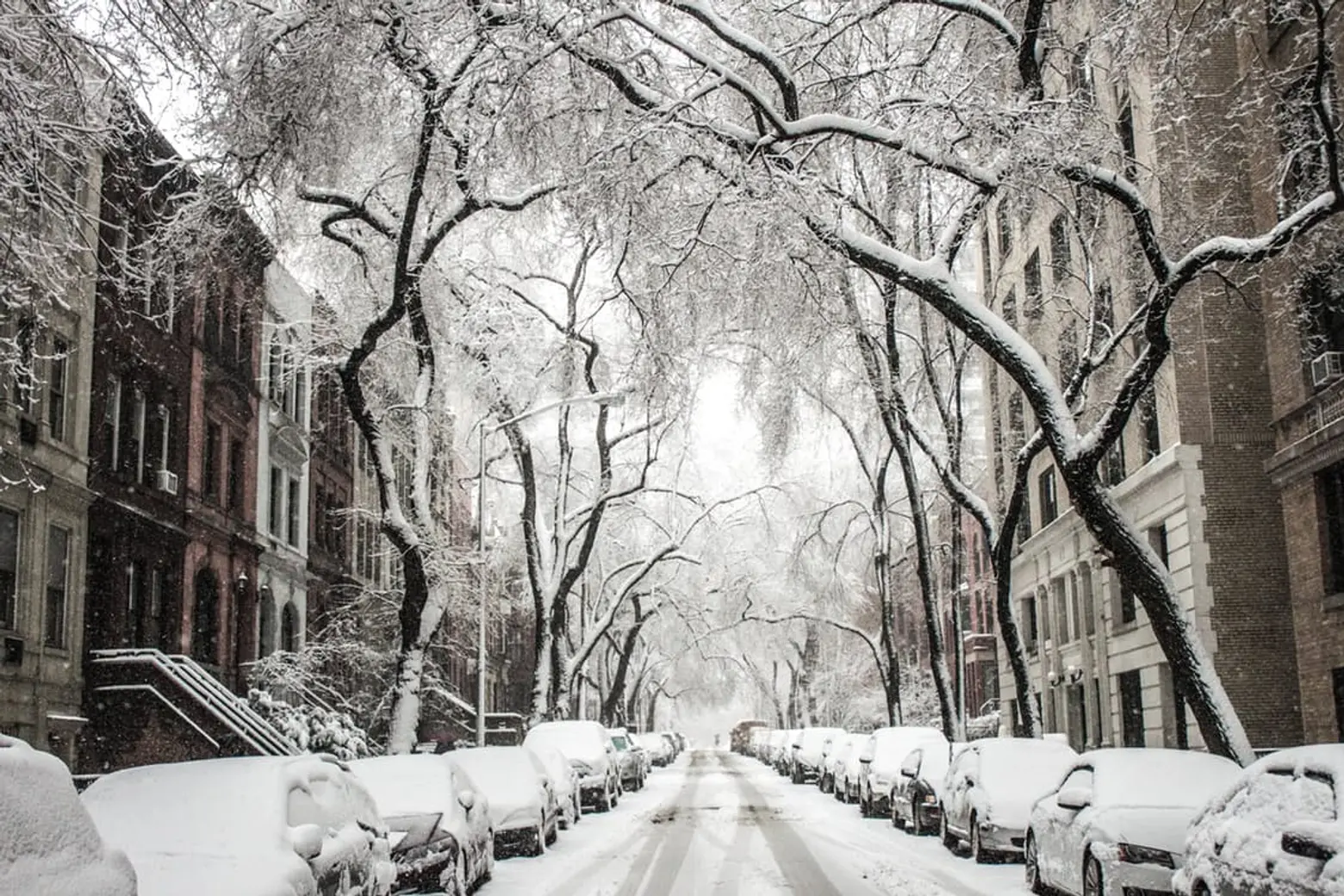 Via David Creixell Mediante/Unsplash
Via David Creixell Mediante/Unsplash
Regulating Building Heat
“Heat rises,” explains Kevin Culver, a superintendent on the Upper East Side, “So basically, if I have to keep my own unit on the first floor at 68 degrees, it is nearly impossible to ensure that it is only going to be 68 to 70 degrees up on the twenty-fourth floor. Newer buildings are easier to regulate, but in buildings constructed before the early 1970s, it’s tricky.”
Culver says heating may even be the most difficult part of his job. “You can’t please everyone. From October 1 to May 31, I’ve always got someone complaining. I just try my best, but I have to stay in compliance—68 degrees minimum during the day. So if you don’t like it hot, my advice is don’t buy on a higher floor.”
Coping Strategies in Overheated Apartments
If you are among the minority of New Yorkers who don’t think your building is hot enough, call 311 to launch a complaint. The city is obligated to follow up. You can also bring any complaints about below average temperatures to the city’s housing court. On the other hand, if you think your apartment is too hot, you will likely have no choice but to find a way to cope. After all, while failing to crank up the heat is a serious infraction, overheating buildings is not. Still, there are some do-it-yourself solutions that may work.
First, there is the obvious and inexpensive solution: Strip down to your underwear and prop open your windows. If the wind coming in is too chilly, bear in mind that in many Nordic countries, extreme hot and cold—sometimes experienced by sitting in a sauna and then jumping into a lake through a hole in the ice—are considered good for your health and vital to surviving the long winter months. If you’re not into extremities, you may want to try a second and more technical solution.
If you live in a newer building, you likely can already set the thermostat on your heater, but don’t kid yourself—you are not actually controlling the temperature but simply setting the fan speed, which controls the rate at which your unit’s heat is circulated. If you have an old-fashion radiator, you likely have no control over your heat at all, but there is now at least one solution—you can purchase a cover for your radiator, such as Radiator Labs’ Cozy.
With the Cozy, even tenants with old steam-based radiators can now do something to control overheating. While you may be skeptical, the Cozy is a made-in and made-for New York solution. In fact, company founder Marshall Cox was living in overheated New York apartment when he first built and tested the Cozy. With the founding of Radiator Lab, he is now attempting to bring the novelty of apartment heat control to other New Yorkers too.
RELATED:

